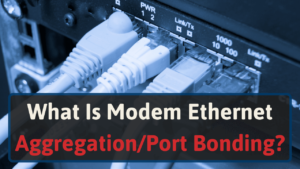Beamforming. Sounds like something a spaceship does, doesn’t it?
We know it can be hard to understand this technology amongst all the technical jargon.
Thus, we have thoroughly researched and summarized the most important aspects in a simple way for you.
Sit back, relax, and let’s get right into it!
How Exactly Does Beamforming Work?
Beamforming allows wireless access points to focus their signal towards a specific direction.
If the receiving device is within this direction, the benefits are significant. Better signal, less interference, and greater throughput.
If your devices support beamforming, you don’t need to worry about “catching” the signal or making sure you are in its path.
Your router will constantly communicate with your client (like laptop or cellphone) to figure out where it is. It will then automatically point its signal in that direction.
Why Haven’t I Heard About This Before?
The 802.11n Wi-Fi standard (Wi-Fi 4), introduced in 2009 and also known as Wi-Fi 4, introduced the concept of beamforming.
But it didn’t specify any parameters on how to execute it. This resulted in companies doing different types of implementations.
Both the router and receiving client needed to use the same parameters for beamforming to work.
You could have devices that supported the technology in one way, but then others that implemented it differently. Making it useless for end users.
Because of this, beamforming never really took off then.
The 802.11ac Wi-Fi standard, or W-Fi 5, finally introduced a standardized version of beamforming. So, any devices that support beamforming today should be compatible with each other.
It’s important to note that while Wi-Fi 5 standardized the technology. Not all 802.11ac devices support beamforming.
Implicit vs. Explicit Beamforming
Beamforming can work in a couple of different ways. If both your router and your client support Wi-Fi 5 beamforming, then they can “talk” with each other to achieve better performance.
Your router will send different “test” signals. Then, your client will reply saying which one worked best.
Your router then focuses on this signal only so your client will get the best reception possible. This is known as explicit beamforming.
Suppose you have an older Wi-Fi 4 device or a newer one that simply doesn’t support beamforming. In that case, you could still see some slight improvements with implicit beamforming.
With this approach, your router acts alone in trying to understand where your client is and will do its best to point the signal in that way.
As you might expect, implicit beamforming is less effective. But it might be worth a shot if your router supports it.
My Router is Wi-Fi 5, How Do I Turn Beamforming On?
Unfortunately, it’s not so straightforward.
While your router is most likely 802.11ac (Wi-Fi 5) compatible, beamforming has always been an optional part of the standard. [1]
This means that manufacturers didn’t need to include this feature. As a result, some brands that either wanted to save costs or were trying to maximize profits did not use it.
Some brands also like to give different names to beamforming technology, making it even harder for users. Cisco calls it ClientLink, D-Link calls it Smartbeam, so on and so forth. No wonder why it never took off then!
The good news is that in 2022, it’s easier to find inexpensive routers that support beamforming.
Do I Need Beamforming?
The industry consensus is that if your router supports beamforming, you can expect better performance. Since there is less wasted signal, your router can focus its efforts in one particular direction.
But let’s suppose your home is on the smaller side, or you are usually close to your wireless router.
In that case, performance improvement can be slight at best [2], if any at all. It wouldn’t be worth extra money in this case.
Another thing to consider is that beamforming is unidirectional, at least for Wi-Fi 5.
You will only reap the benefits for your download speeds, and it won’t do anything to improve your upload performance.
However, once you jump into Wi-Fi 6, you can benefit from beamforming bidirectionally. Both for download and upload speeds, if your client device supports it.
Bottom Line
In short, we don’t recommend you upgrade your router just for beamforming.
You should certainly not look at it as the main solution to poor signal or very bad performance.
It also won’t be of much help if the beamformed signal encounters walls or resistance before getting to your client device.
Look at it as more of a performance booster for devices that are just slightly too far away. Or that are suffering from increased interference from other signals.
You might find that placing your router in a better spot can solve all your problems. Without the need to invest in a beamforming capable router.







